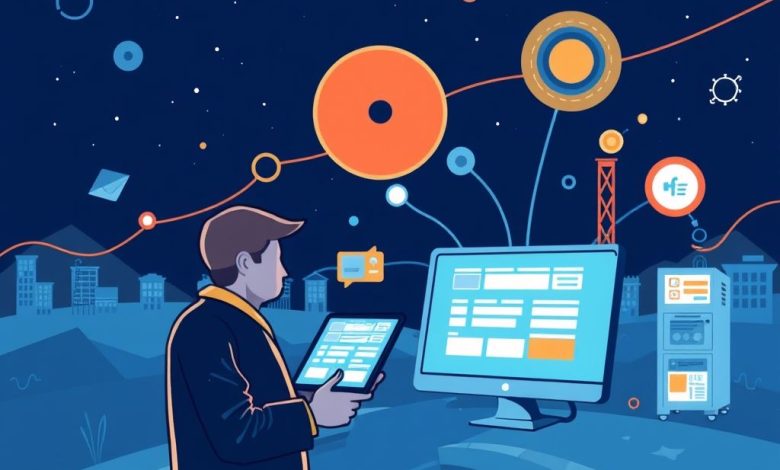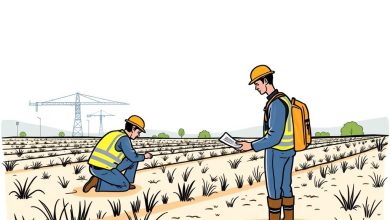Field Service Management Revolution Leveraging ARVR Technologies for Enhanced Efficiency and Customer Experience

Introduction
Field Service Management (FSM) is a crucial aspect of many industries, including HVAC, electrical work, plumbing, and home maintenance. Traditionally, FSM relied heavily on manual processes and basic tools like paper-based schedules and physical maps. However, the advent of Augmented Reality (AR) and Virtual Reality (VR) technologies has revolutionized how field service operations are managed and executed. This article explores the integration of AR/VR capabilities in Field Service Management and its potential impact on efficiency, customer satisfaction, and operational costs.
- The Evolution of Field Service Management
- The Role of AR/VR in Field Service Management
- Case Studies and Implementation Examples
- Example 1: HVAC Company Using AR for Diagnosis
- Example 2: Plumbing Company Utilizing VR for Training
- Example 3: Electrical Contractor Leveraging AR for Scheduling
- Challenges and Considerations
- Conclusion
The Evolution of Field Service Management
Field Service Management has undergone significant changes since its inception. From simple scheduling systems to sophisticated software solutions, the industry has adapted to technological advancements. The incorporation of mobile devices and cloud computing has enabled real-time communication between dispatchers and technicians, improved route optimization, and enhanced inventory management.
However, despite these improvements, traditional FSM still faces challenges such as:
- Inefficient scheduling leading to long wait times
- Difficulty in accurately estimating job duration
- Challenges in providing accurate diagnoses without visual aids
- Limited ability to train new technicians effectively
These issues have led to increased operational costs and decreased customer satisfaction.
The Role of AR/VR in Field Service Management
Augmented Reality and Virtual Reality technologies have been increasingly adopted across various industries due to their potential to enhance productivity and decision-making processes. In the context of Field Service Management, AR/VR offers several benefits:
- Improved diagnosis accuracy: AR technology overlays digital information onto the physical world, allowing technicians to see hidden components or receive real-time diagnostic information.
- Enhanced training: VR environments simulate real-world scenarios, enabling new technicians to practice and learn without risking damage to actual equipment.
- Streamlined scheduling: AR-powered scheduling systems can optimize routes based on real-time traffic conditions and technician availability.
- Increased customer engagement: AR can provide customers with step-by-step visual instructions during the service process, improving transparency and trust.
- Reduced paperwork: AR can digitize inspection reports and other documentation, reducing errors and increasing efficiency.
Case Studies and Implementation Examples
Several companies have successfully implemented AR/VR technologies in their Field Service Management strategies:
Example 1: HVAC Company Using AR for Diagnosis
A large HVAC company integrated AR glasses into their technicians’ workflow. These glasses provided real-time diagnostic information, including temperature readings, pressure levels, and suggested repairs. As a result, the company reported a 30% reduction in first-time fix rates and a 25% decrease in average repair time.
Example 2: Plumbing Company Utilizing VR for Training
A plumbing company invested in a VR training simulator. New technicians could practice diagnosing and fixing common issues in a virtual environment before working on actual jobs. This approach reduced on-the-job training time by 40% and improved overall job quality.
Example 3: Electrical Contractor Leveraging AR for Scheduling
An electrical contractor implemented an AR-powered scheduling system. This system optimized routes based on real-time traffic data and technician availability. As a result, the company reduced travel time by 15% and improved overall schedule adherence.
Challenges and Considerations
While the integration of AR/VR technologies in Field Service Management shows great promise, there are several challenges to consider:
- Cost: Implementing AR/VR solutions requires significant investment in hardware and software.
- Technical expertise: Proper implementation requires specialized knowledge of both FSM software and AR/VR technologies.
- Data privacy concerns: Collecting and storing sensitive customer data through AR/VR devices raises privacy considerations.
- User adoption: Some technicians may resist adopting new technologies, requiring careful change management strategies.
- Connectivity issues: AR/VR devices require reliable connectivity, which can be problematic in remote areas.
Conclusion
The integration of AR/VR capabilities in Field Service Management represents a significant leap forward in operational efficiency and customer satisfaction. By leveraging these technologies, companies can improve diagnosis accuracy, streamline training processes, optimize scheduling, increase customer engagement, and reduce operational costs.
As the field continues to evolve, it’s essential for field service managers to stay informed about the latest developments in AR/VR technologies and their applications in FSM. While challenges exist, the potential benefits far outweigh the costs for many organizations in this sector.
By embracing these innovative technologies, field service companies can position themselves at the forefront of their industries, offering superior services while maintaining competitive pricing. As AR/VR continue to advance, we can expect even more exciting developments in the future of Field Service Management.




